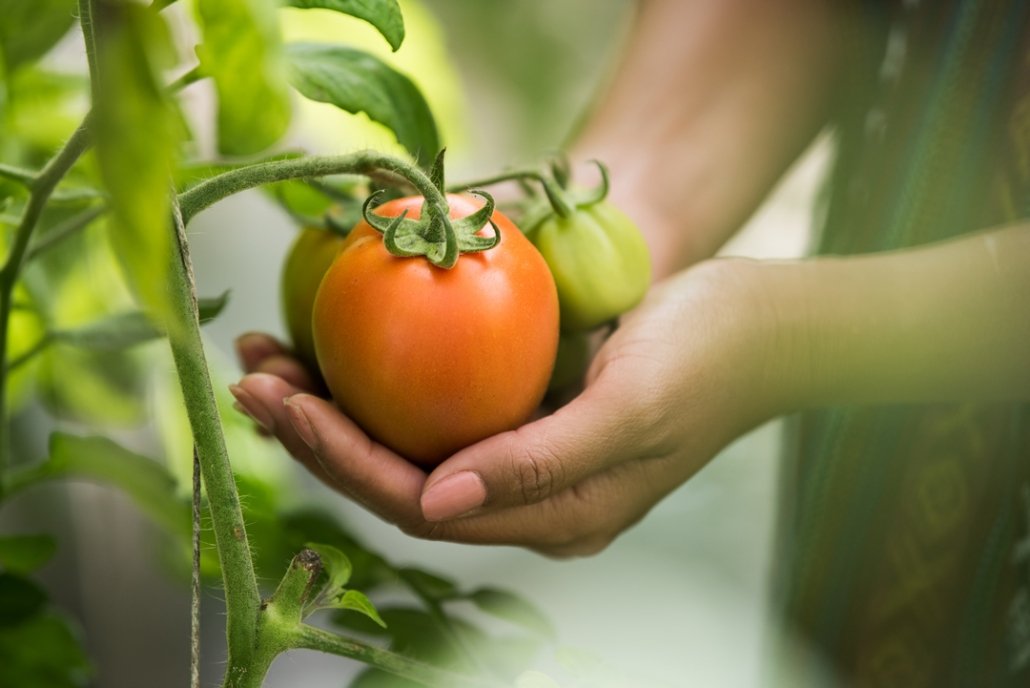What is a sustainable food supply?
What is a sustainable food supply and how can it be achieved?
A sustainable food supply involves producing food but protects land, energy and water resources, to maintain supplies for future generations. It benefits and includes local communities, supports the local economy and applies to HICs and LICs/NEEs.
There is a range of strategies that can be adopted to achieve a sustainable food supply. These are explored below.
Organic farming involves growing crops without chemicals such as pesticides, insecticides and artificial fertilisers. It is a type of farming common across the world in both HICs and LICs/NEEs.

Organic farming can be labour-intensive
Organic farming works in harmony with nature and reduces its environmental impact. However, it is labour intensive. For example, farm workers may be needed to weed by hand. In addition to this yields are lower than intensively farmed produce. Therefore, prices tend to be higher.
Permaculture or permanent agriculture is similar to organic farming in that it encourages farming in harmony with the environment. Although permaculture uses organic gardening and farming practices it goes beyond these practices and integrates the garden and home to create a lifestyle that impacts less on the environment.
Permaculture promotes a sustainable lifestyle involving sustainable approaches such as rainwater harvesting, composting, crop-rotation and woodland management. Permaculture has not been widely adopted in LICs/NEEs. However, it is widespread throughout HICs.
Urban farming initiatives involve converting derelict or waste land in urban areas into vegetable gardens or productive farmland. They are often community-based initiatives.
Urban farming initiatives bring a range of benefits including increased food security, improved natural environments (with bees and butterflies), healthier diets and a greater sense of community.
Growing Together is a partnership initiative of community and environmental sector organisations that aims to unlock income, land and skills for community growing groups to help them become financially self-sustaining.
Growing Together has been awarded £800,000 by the Big Lottery Fund, which will enable it to hothouse fresh, innovative ways for local community growing groups to generate their own income.
People are becoming increasingly concerned about where their food comes from. There is significant demand, especially in HICs, for meat and fish to come from sustainable sources. Food labels typically provide this information which gives customers the power to make a difference.
Sustainable fishing conserves fish stocks and stops overfishing. Fishing quotas (controls) are issued by the European Union to all its members. Sustainable fishing techniques include using poles and lines instead of nets, returning fish and shellfish that is too small and diving for shellfish.
Sustainable livestock typically involves low-intensity cattle grazing on pasture with minimal use of vaccinations and chemicals. The most well-known approach is free-range farming, especially involving chickens and pigs. They are popular because of the higher standard of animal welfare and benefit the environment. These systems are much more sustainable than high-intensity indoor systems operated in some areas of the world.
Refrigerated vehicles and air freight food can be bought throughout the year regardless of the season. However, this is not sustainable due to the high level of greenhouse gas emissions associated with transporting food.
To overcome the problem people are taking to buying local seasonal food from supermarkets and farm shops and farmers markets. This reduces food miles and carbon footprints. It also provides jobs and supports the local economy.
It is estimated that one-third of all food produced goes to waste. 60% of the waste is fruit and vegetables due to their short shelf life. Reducing food waste would have a positive impact on tackling food shortages. Strategies to achieve this include:
In LICs, where food shortage is the greatest, improved cold storage and transport infrastructure would reduce food waster.
Use the images below to explore related GeoTopics.